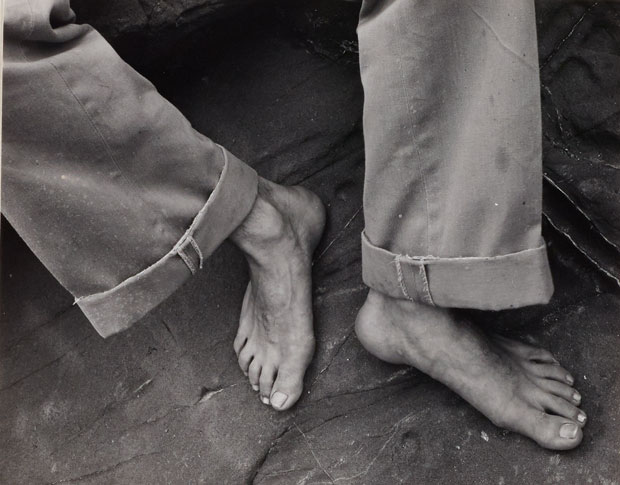Queer Aperture #218 – Editors' Note
The following note first appeared in Aperture magazine #218, Spring 2015. Subscribe here to read it first, in print or online.

Minor White, Tom Murphy, San Francisco, 1948, No. 8 from the series The Temptation of St. Anthony Is Mirrors, sequenced 1948 © Trustees of Princeton University, and courtesy the Minor White Archive, Princeton University Art Museum

Minor White, Tom Murphy, San Francisco, 1948, No. 9 from the series The Temptation of St. Anthony Is Mirrors, sequenced 1948 © Trustees of Princeton University, and courtesy the Minor White Archive, Princeton University Art Museum
Why an issue on queer photography? The going narrative states that, after the culture wars of the early 1990s, we moved into an era in which sexual difference mattered progressively less, when the fight against AIDS no longer defined the gay community, and when same-sex marriage had been approved in many parts of the United States and in a handful of countries around the world. But considering the volume of recent photography we’ve encountered that is pointedly engaged with questions of queer identity and experiences—as well as work by curators and writers who are revisiting past figures and projects—it seems that queer is back on the agenda, or rather, that it never left. The public conversation about what it means to be queer (which arguably began with Stonewall in 1969) has evolved and remains not only relevant but also necessary to continue. As photographer Catherine Opie notes, “Queer photographers these days are not necessarily identifying in singular identity terms; they are interested in being part of a political discourse about how radically life has changed over the past three decades.”
One radical difference is globalization. Thirty years ago, in an effort to make her own community visible, American photographer Joan E. Biren traveled the United States and Canada presenting a slide-show history of photography foregrounding lesbians as both artist and subject. Today, Zanele Muholi cites Biren’s groundbreaking project as a key influence on her ongoing work to create a visual record of South Africa’s lesbian community, many of whom have suffered discrimination and violence. Such cross-generational dialogue threads this issue as younger photographers probe the past to engage queer archives and histories. Dean Sameshima appropriates old physique and cruising imagery from a time of secret codes and clandestine existence, a period the artist himself never experienced. This time was one that San Francisco–based photographer Hal Fischer codified in his 1977 project Gay Semiotics, revisited in these pages.
Kevin Moore introduces David Benjamin Sherry’s brashly colored landscapes, which invoke iconic American photographers, including Carleton Watkins, Edward Weston, and Minor White, Aperture’s founding editor. The subject of White’s sexuality was explored in last year’s Getty Museum exhibition that featured the little-known 1948 handmade book, The Temptation of St. Anthony Is Mirrors, an early homoerotic series of White’s student-model. Two images from this project appear above, and on the occasion of this issue, we have republished Moore’s 2008 essay, “Cruising and Transcendence in the Photographs of Minor White,” on our website (aperture.org/minorwhite218).
Queer perspectives continue to offer essential counterpoints to the dominant heteronormative (and patriarchal) paradigm. Vince Aletti sums this idea up best in his contribution when he writes: “Queer doesn’t have a look, a size, a sex. Queer resists boundaries and refuses to be narrowly defined.” This idea is evident in A.L. Steiner’s anarchic collages, which playfully grapple with our moment of economic and environmental crisis, in K8 Hardy’s series of self-portraits that confound gendered tropes and play with conventions of fashion photography, and in Shannon Michael Cane’s survey of queer independent publishing. And working in a very different sociopolitical and cultural context, Ren Hang, a young Chinese photographer whose work appears on our cover, has garnered a following in his country while stirring controversy. In his raw, playful images, nudity is the norm, and sexual preference and gender begin to feel irrelevant. While Hang doesn’t identify as part of a specific queer scene or movement in China (and the term queer doesn’t entirely translate there), his provocative and weirdly beautiful images seem to be emblematic of the contemporary idea that gender and sexuality are fluid—pointing toward a future (and, for some, a present) in which traditional dichotomies of gender and sexuality no longer apply.
—The Editors























